IN JAIPUR
Jaipur is the capital of India's Rajasthan state. It evokes the royal family that once ruled the region and that, in 1727, founded what is now called the Old City, or Pink City for its trademark building colour. At the centre of its stately street grid (notable in India) stans the opulent, colonnaded City place complex. With gardens, countyards and museums, part of it is still a royal residence. The city of Jaipur was founded in 1727 by Jai Singh II, the Raja of Amer who ruled from 1699 to 1743. Under the architectural guidance of Vidyadhar Bhattachary, Jaipur was planned based on the principles of Vastu Shastra and Shila Shastra. The construction of the City began in 1726 and took four years to complete. The city was divided into nine blocks, two of which contained the state buildings and palaces, with the remaining seven allotted to the public . Hug ramparts were built, pierced by seven fortified gates.

Albert Hall Museum : The oldest museum in Rajasthan, the Albert Hall Museum boasts an extensive collection of art and historically significant artifacts. Come for the Egyptian mummy, stay to see antique coins from different periods in India's history, charming permanent exhibits of miniature paintings, 18th-century costumes worn by members of different castes, and a peculiar collection of 19th-century clay figures demonstrating all the yoga poses.
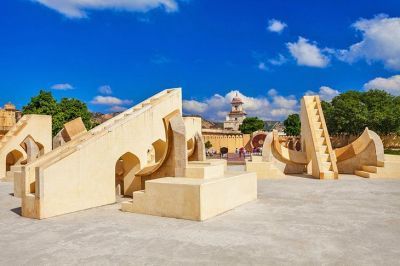
Jantar Mantar : At first glance, Jantar Mantar may look to be nothing more than a bunch of larger-than-life abstract sculptures. But this is not an art gallery—it's a special collection of astronomical tools started by Rajput ruler Jai Singh II to measure the heavens nearly 300 years ago.
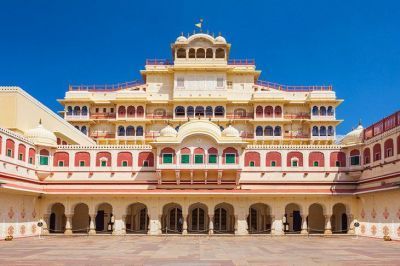
City Palace : City Palace has stood at the heart of the Old City of Jaipur for nearly three centuries, shortly after Maharaja Sawai Jai Singh II decided to relocate his court from the city of Amber.
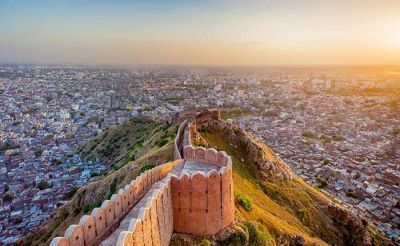
Nahargarh Fort : The fort was formerly built by Maharaja Sawai Jai Singh II in 1734, seven years after he built the city of Jaipur. The fort was primarily built as a summer retreat for the royal king. Nahargarh Biological Park or Nahargarh Zoological Park is one of the most recent count to Rajasthan's adventure tourism.

Jaigarh Fort : The Jaigarh Fort is a majestic stronghold built by Sawan Jai Singh II. This almost-intact fort is surrounded by huge battlements and is connected to the Amer Fort (also called 'Amber' Fort), with subterranean passages.
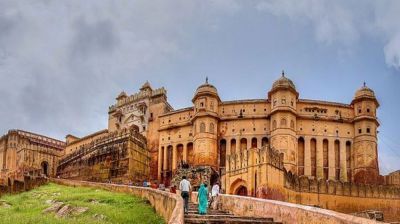
Amer Fort : A wonder shining on the hills of the Aravalli, Amber Fort is located at a distance of 11 km from Jaipur. The fort has earned a place in the list of the UNESCO World Heritage Sites of India.
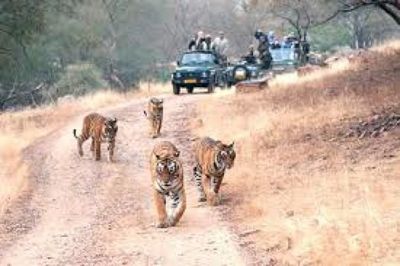
Jhalana Safari : Jaipur Jungle Safari, a part of the Jaipur sanctuary is located about 12 km from Jaipur on the Jaipur-Delhi highway. It encompasses a large area of 720 hectares and is situated under the Aravalli range. The Park is famous for its vast flora and fauna, and its main aim is to conserve it. It also doubles up as a great place to educate people and conduct research on existing flora and fauna.
AROUND JAIPUR
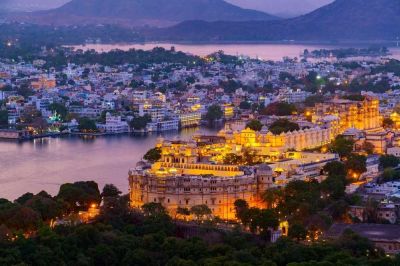
Udaipur : Udaipur, also known as the City of Lakes, is one of the most visited tourist places in Rajasthan. Boating through the shimmering Lake Pichola is one of the most beautiful sights and highlights of every Udaipur trip. Lake Pichola, Jaisamand Lake, City Palace, Monsoon Palace, Jagmandir, Fateh Sagar Lake, Jagdish Temple and Saheliyon ki Baari are some of the popular tourist places in Udaipur. A trip to Udaipur is often combined with a visit to nearby Kumbhalgarh (80km) and Mount Abu. The revered Nathdwara temple is about 60 km from Udaipur.

Jaisalmer : Jaisalmer is a prominent tourist spot located in the northwestern state of Rajasthan in India. It is known as the 'golden city' due to its golden dunes and castles clad in golden honey sandstone. Jaisalmer is adorned with lakes, ornate Jain temples and havelis. Climb onto the camel saddle and make your way through this desert to camp under the starry night sky for an unforgettable experience. The Jaisalmer Fort stands as a citadel with narrow alleys inhabited by people for generations and shops selling colourful handicrafts. Jaisalmer is a town, and to reach the Sand Dunes, travellers have to take a jeep safari followed by a camel ride. Thus, Jaisalmer is an amalgamation of exotic Indian desert culture, heritage and adventure.
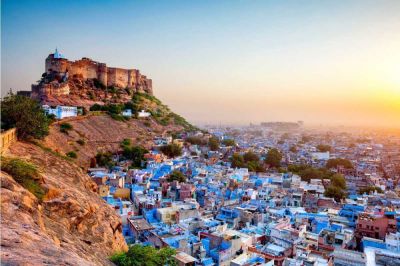
Jodhpur : Jodhpur is the second-largest city in Rajasthan and the former capital of the Marwar region. It is popularly called "the Blue City" as it looks completely blue from an aerial view because of its blue walls and houses. Jodhpur is primarily famous for its temples, lakes and snacks, with the magnificent Mehrangarh Fort being the main attraction. The magic of Jodhpur lies in the streets of the old city itself, which circles the mighty Mehrangarh. Hundreds of shops, eating joints, and vendors make it a bustling chirpy town, especially near the landmark clock tower and Sardar Market. The new and modern Jodhpur lies beyond Mehrangarh. Nearby Jaswant Tada and Umaid Bhawan Palace are also among the top attractions in Jodhpur. Jodhpur is famous for its delectable food items, especially Pyaaj Kachori, Mirchi Bada and Mawa Kachori.
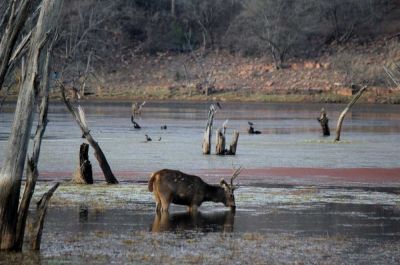
Ranthambore : This is one of the best tiger reserves of the country, known to have "friendly" tigers and chances of sighting one here is reasonably better than many other tiger reserves of India. Along with this Ranthambore has one of the richest flora and fauna making it an absolutely must visit area Nestled in the foothills of Vindhya and Aravali Hills, Ranthambore is famous for its tiger reserves and the variety of flora and fauna found. The Ranthambore National Park, along with the Ranthambore Fort and the surrounding hills and valleys, altogether make Ranthambore a traveller's delight.
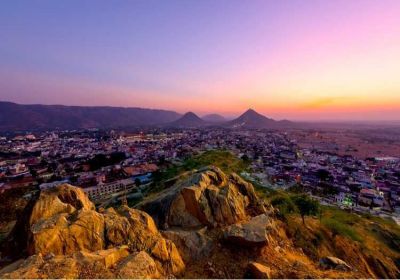
Pushkar : Pushkar is a small temple town located around 15 km from Ajmer in Rajasthan. A perfect choice for a weekend getaway from Jaipur, Pushkar has an array of cafes and hostels for a backpacking trip. Every November, Pushkar is host to the Pushkar Mela, one of the biggest camel fairs in the country. Known for the world's only dedicated Brahma temple, Pushkar is primarily a pilgrimage site for Hindus. A delight for street-shopping lovers, Pushkar has shops in the main street selling everything from silver oxidised jewellery to merchandise swaddled in various colours. The Pushkar Mela attracts millions of visitors from around the world. With folk performances, rides, stalls and even magic shows, the entire town is lit up, music blares from every house, and everyone is in a festive mood.
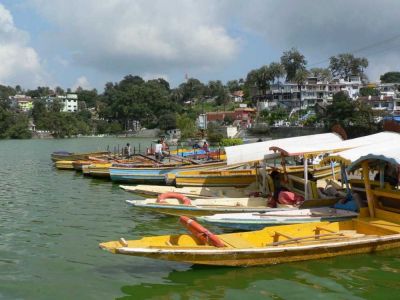
Mount Abu : The only hill station of Rajasthan, Mount Abu is located in the Aravali range. The most important attraction, however, are undoubtedly the Dilwara temples, which is one of the most stunning pieces of architecture in the country. Travellers can enjoy calm and relaxed boating in Nakki Lake, and a view of the sunset from the vista points. The restaurants and eateries around the lake are great places to eat local food and chill. The highest peak of the Aravali Range - Guru Shikhar also lies in Mt. Abu. Mount Abu Forest Sanctuary with an abundance of flora and fauna is also a highlight. The exceptionally intricate architecture of the Dilwara temples are of course the main attraction here.
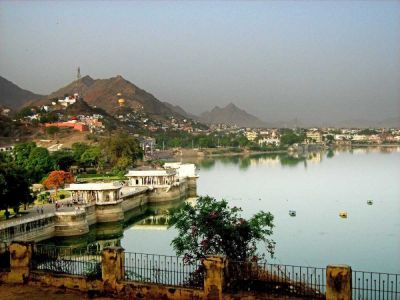
Ajmer : Surrounded by Aravali ranges, the city of Ajmer is most famous for the Ajmer Sharif Dargah of saint Muin-ud-din Chishti. This makes Ajmer one of the most significant places of Islamic pilgrimage in the world. Ajmer has a unique charm that lies in the ethos and craftsmanship practised over centuries. Visit Ajmer to witness the exquisite Mughal architecture set in an aura of spirituality. The city is also a renowned religious spot for Jains because of Golden Jain Temple. Apart from Ajmer Sharif Dargah and the Jain Temple, there are some other tourist attractions in Ajmer as well. Adhai Din ka Jhopra, Ana Sagar Lake, Foy Sagar Lake, Ajmer Government Museum and Taragarh Fort are some of them.
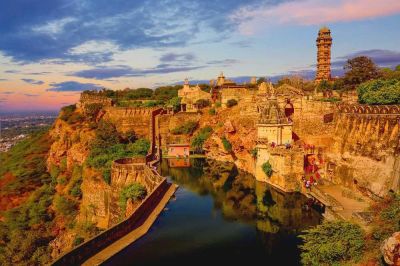
Chittorgarh : Located in South-Eastern Rajasthan, Chittorgarh is known for Chittorgarh Fort, the largest fort in India built on a hilltop, spreading over an area of around 700 acres. The capital of the erstwhile kingdom of Mewar, the magnificent fortress will always be remembered for the courageous self-sacrificing Jauhar performed by Rani Padmini to thwart the conquest of the fort by Alauddin Khilji. Chittorgarh stands at the helm of Chattari Rajput pride and is remembered in the pages of history for its glorious battles, especially the siege of Alauddin Khilji. Once known for its grandeur and opulence, today, Chittorgarh has left its tales of bravery and betrayal far behind to catch up to commercialization. It takes a few hours to cover the fort complex on foot. Wear comfortable footwear and keep a water bottle handy.
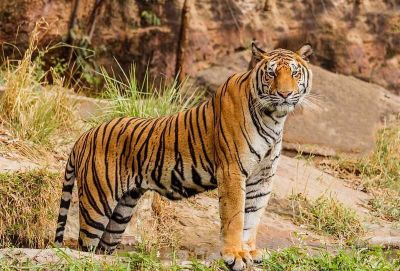
Sariska Wildlife Sanctuary : Nestled in the Aravali Hills over an area of about 800 sq. Km covering the grasslands, dry deciduous forests, cliffs and rocky landscape, lays the Sariska National Park, now known as The Sariska Tiger Reserve. This area was once hunting preservation of The Maharaja of Alwar. The Reserve is known for its majestic Royal Bengal Tigers. It was declared as a national park in 1982. The protected area is a part of the Aravali Range and the Kathiawar-Gir dry deciduous forests ecoregion. In 1978, it was given the status of Tiger Reserve under the Project Tiger. It is the first tiger reserve to relocate the Tigers (from Ranthambore) successfully. As it lies in the lap of Aravali Hills, it holds an abundant amount of mineral resources like copper.



